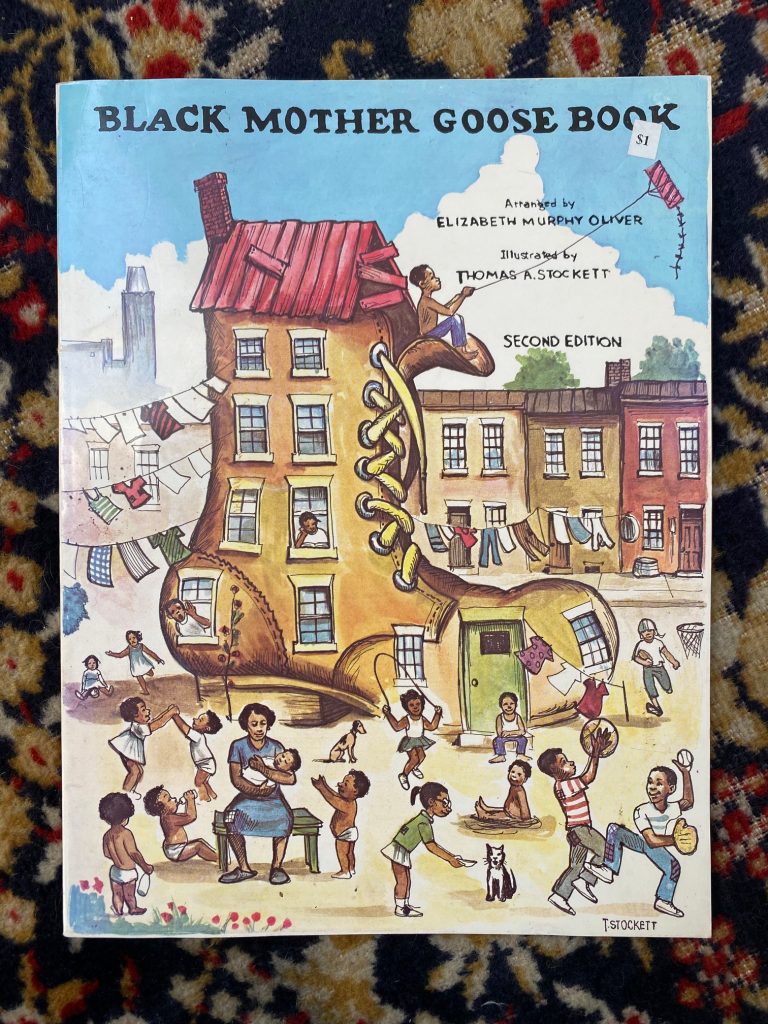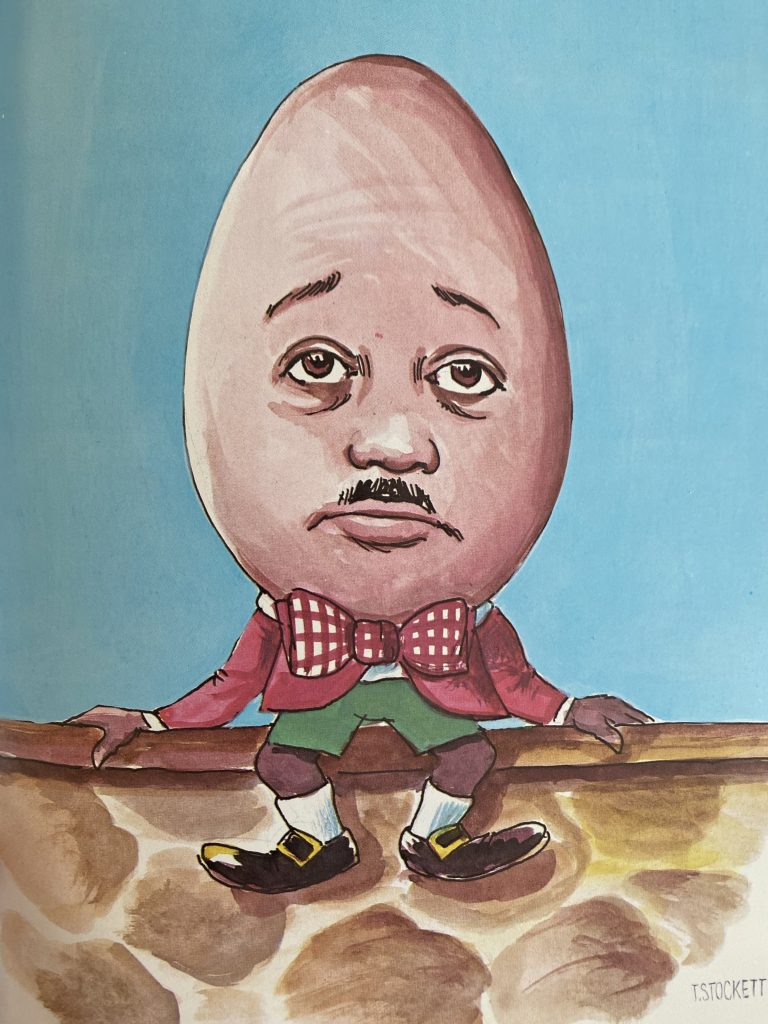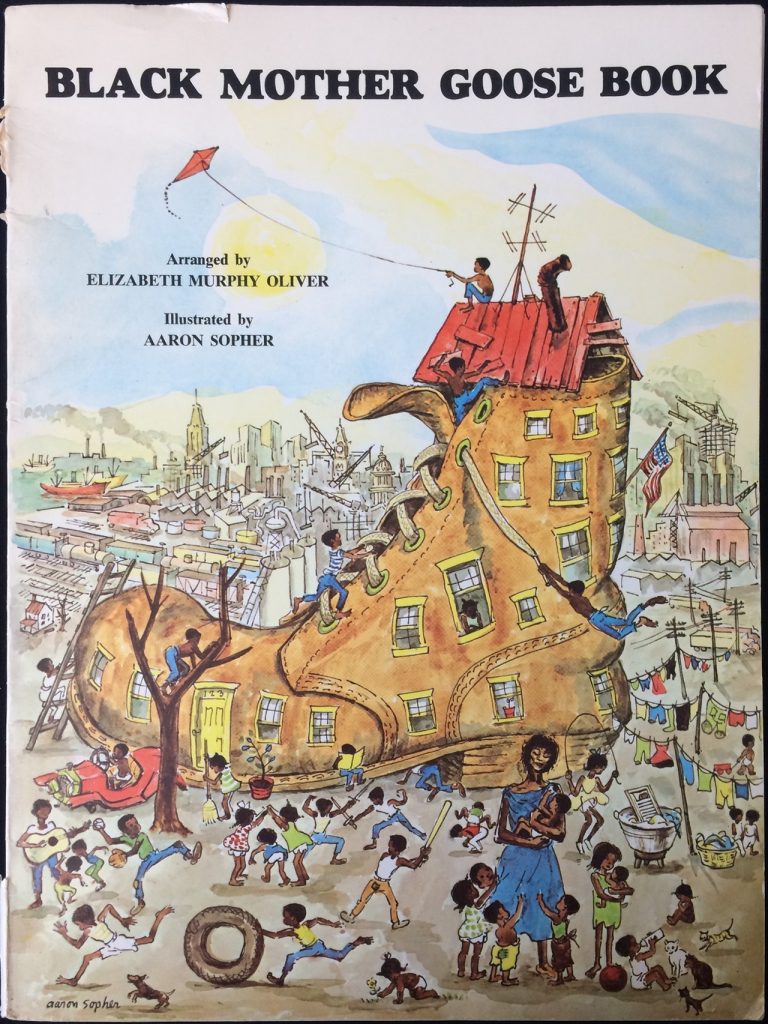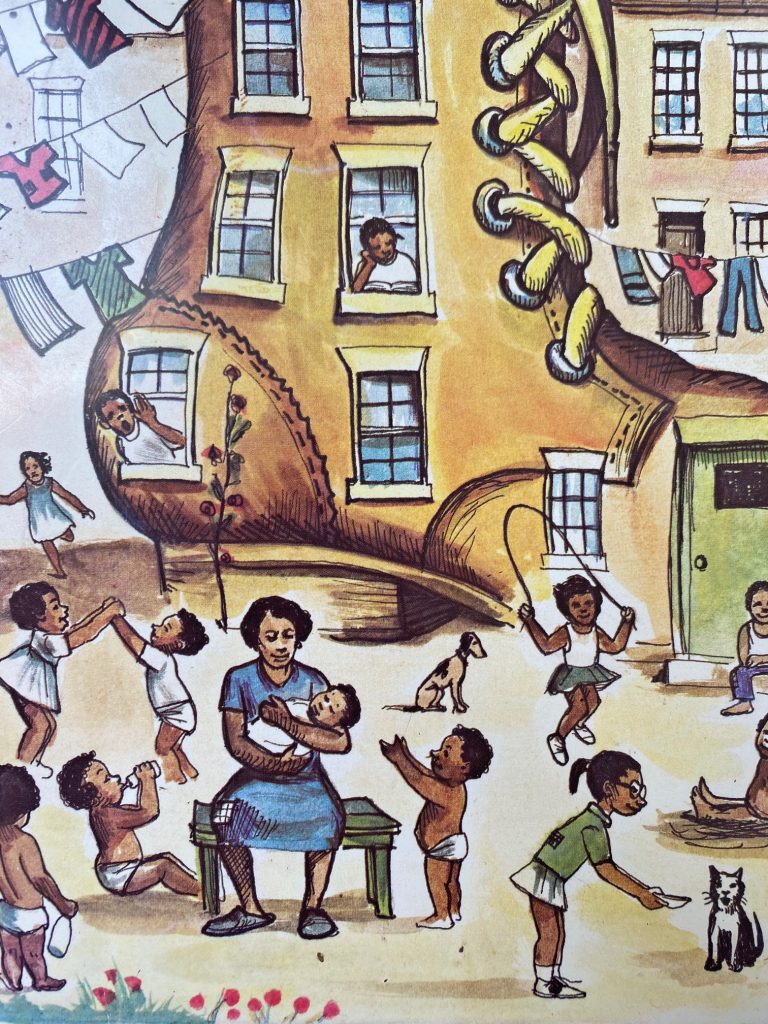Following yesterday’s book haul, I was going to post an overview of the books I picked up but I realized I have unfinished business. You see, six, seven or ten years ago (I forget which), at the same book sale, I came across this Mother Goose collection.

I’m a sucker for old books but this one really grabbed my attention. It was the kind of book I always figured must have existed, but I had never seen. There was a time, actually, back when I was a fresh-faced youth, that I thought I might try this kind of a book, nursery rhymes retold with a multicultural cast of characters (I’d like to say I was wise enough to know cultural appropriation wasn’t a good thing, but in reality it was just another thing on the back-back-back burner). Here, though, at long last was the book I imagined.

So, usually in these situations I’ll look at the work and measure how well I think it achieved its goals and wonder what I, as the author and/or illustrator, would have done differently, but in this case I became obsessed with the book’s history. I found out the author, Elizabeth Murphy Oliver, and the illustrator, Thomas A. Stockett, were editor and editorial cartoonist (respectively) for the Baltimore Afro-American, which, according to Wikipedia, is the longest-running African-American family-owned newspaper in the US (established in 1892). I also learned that the first edition of this book was illustrated by Aaron Sopher, who, as you can probably tell from the first edition’s cover, wasn’t Black.

Why would I guess he’s not Black? In list form:
- generic/anonymous characters: a lot of the figures have their faces obscured, even the ones facing forward (the girl jumping rope is looking over her shoulder, the boy playing guitar has no face)
- stereotypes: the braids on the littlest babies feel kind of racist and the polka dotted dresses over bloomers feels like a costume from the Antebellum South
- more stereotypes: I read a kind of desperation or neglect in the kids grabbing at mama’s dress. There’s an air of poverty about the whole illustration.
- exoticism/fetishism: the “old woman who lives in the shoe” looks so tired as to be emaciated, but there’s some kind of special attention going on in how her face is drawn
Sopher’s work is more than competent. The composition is sophisticated and successful and his colors work really well. His figural gesture drawing is very strong even in the more subtle characters (look at the two kids walking nonchalantly under the clothesline), and yet it feels more like an editorial cartoon than the illustration Stockett would do. These details in Stockett’s work are much more sympathetic.

Of note:
- there’s a girl in the window reading
- there’s a girl with glasses feeding a cat
- the babies appear well fed, two even have bottles
- clothes have patches, but the characters don’t seem so desperately poor
- the “old woman” has Black hair
I wonder what discussions lead to the creation of the second edition? I mean, I can imagine, but I wonder how it went down. The question of who gets to tell whose stories has gotten more attention in our modern, more enlightened times, but I think the question of who gets to draw whose stories is still being figured out. It’s always been of interest to me that even at the height of the George Floyd protests/BLM movement, when Amanda Gorman’s poem CHANGE SINGS was set to picture book, her words were matched with illustrations by a white man. I wonder, with curiosity, not judgement or condemnation, what went into that decision.
Anyway, BLACK MOTHER GOOSE BOOK sparked in me an interest in Black stories produced outside of traditional publishing and I started keeping an eye out for these (usually) self-published books. I didn’t collect a huge number of them because a) someone else is probably a better curator of this history than I am and b) I soon realized there are a lot of interesting Black stories being produced outside (and within!) traditional publishing today. I’m going to spend the rest of this month sharing these. Happy BHM!
